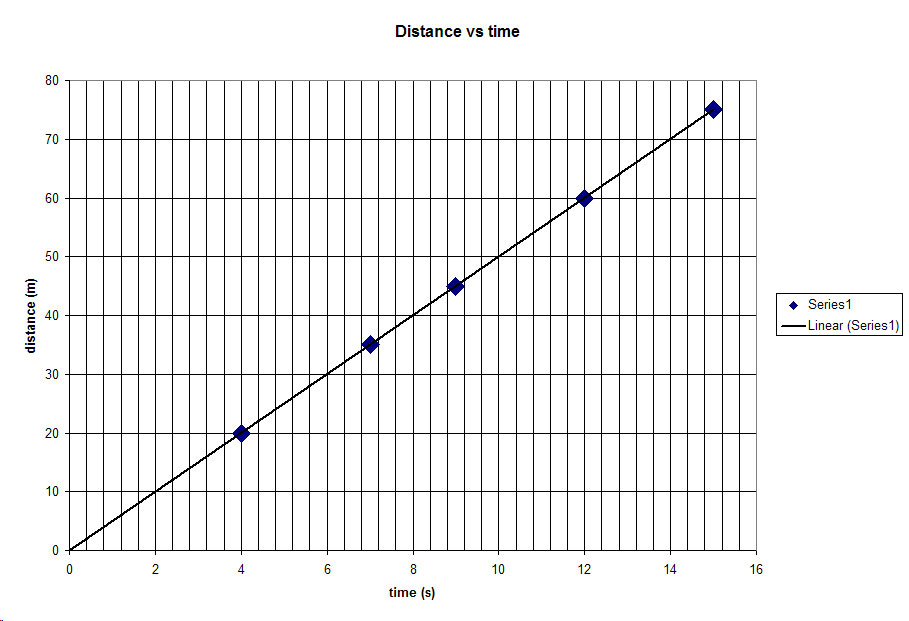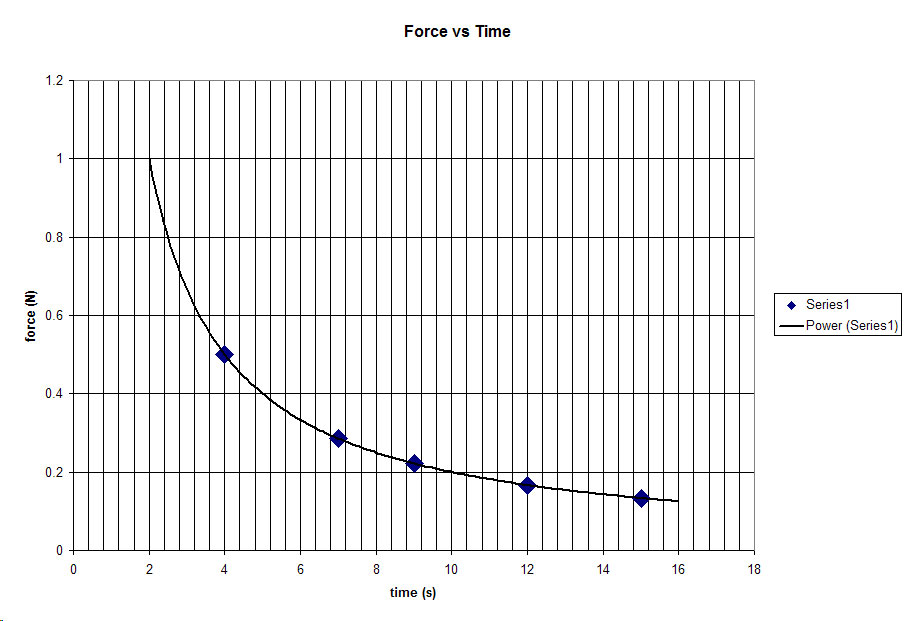- It/Not It
- Unit conversions - make units cancel so you end up with what you want
- Conversion to know how to use:
- 1 in = 2.54 cm
- 1 hr = 3600 s
- 1 m = 100 cm (or s or g or etc)
- 1 km = 1000 m (or s or g or etc)
- 1 m = 1000 mm (or s or g or etc)
- 1 kg = 2.2 lbs
- 1 mi = 1760 yds
- 1 yd = 3 ft
- Examples
- 25 cm --> ? m
- 30 in --> ? km
- 5 mph --> ? m/s
- 20 km/hr --> ? m/s
- 120 lbs = ? kg
- Used for very small or very large numbers
- NO MORE THAN 3 digits, first then decimal than no more than 2 (#.## x 10#)
- Examples
- 3 x 10-3 = .003
- 2.45 x 104 = 24500
- .000000076589 = 7.66 x 10-8
- 300000000 = 3 x 108
- Type into calculator using "Exp" or "ee" button -- find it!
- For first number you would type 3 x 10 ee 3 - (or -3 depending on calculator)
- 2 . 4 5 x ee 4
- 7 . 6 6 ee - 8
- 3 ee 8

- What type of graph is this? (linear)
- Where is the title? labels? units?
- What is the equation for this graph? (y = mx +b)
- Let's substitute --> d = mt + 0
- How do you find slope? (y2-y1/x2-x1) -->(60m - 20m)/(12s - 4s) = 40m/8s = 5 m/s
- Substitute --> d = (5m/s)t
- Known as DIRECT, as d increases, t increases

- What type of graph is this? (parabola)
- Where is the title? labels? units?
- What is the equation for this graph? (y = kx2)
- Let's substitute --> d = kt2
- How do you find k (constant)? (pick a point) -->
200 m = (k)(6.4 s)2
200m = (40.96s2)k
k =200m/40.96s2 = 4.9 m/s2
- Substitute --> d = (4.9 m/s2)t2
- Known as DIRECT, as d increases, t increases

- What type of graph is this? (hyperbola)
- Where is the title? labels? units?
- What is the equation for this graph? (y = k/x)
- Let's substitute --> F = k/t
- How do you find k (constant)? (pick a point) -->
1 N = k/2s
k = (1N)(2s) = 2 Ns
- Substitute --> F = (2Ns)t
- Known as INVERSE, as F increases, t decreases
- All word problems MUST be in this format
- Helps keep organized
- Steps:
- Given: Assign know numbers to variables
- Find: Assign variable letter to unknowns
- Relationship: Choose all needed equations
- Solve: Solve for what you want to find (NO NUMBERS!!! USE ALGEBRA)
- Compute: Plug in numbers, solve, BOX answer
- Always go down.
- May use columns
- Always use units in first and last step
- Example: A room is designed so that it is 50 m wide, 100 m long, and 12 m high. What is the area of the floor? What is the volume of the room?
- G: w = 50 m, l = 100m, h = 12m
- F: A=? , V=?
- R: A = lw, V = lwh
- S: A = lw, V = lwh
- C: A = (50m)(100m) = 5000 m2, V = (50m)(100m)(12m) = 60000m3
- Another example: A round swimming pool needs to be designed so its area is no more than 1200m2, what radius must if have?
- G: A = 1200m2
- F: r = ?
- R: A = (pi)r2
- S: r = sqrt(A/pi)
- C: r = sqrt (1200m2/3.14) = 19.5m